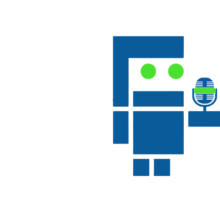
Robohub.org
089
Demonstrations at IROS with Péter Fankhauser and Mike Rubenstein
In today’s show, we hear about two demonstrations that caught our attention at the IEEE/RSJ International Conference on Intelligent Robots and Systems (IROS). Péter Fankhauser from the ETHZ in Zurich tells us about the Rezero ballbot, a balancing robot that speeds around on a sphere. Mike Rubenstein from the Self-organizing Systems Research Group at Harvard then tells us about their efforts to make swarms of 1024 robots a reality with the kilobot project.
Péter Fankhauser

© Karl Hug Ringier AG
The interdisciplinary team developed the ballbot, a robot that balances and drives around on a ball. Using a single ball instead of wheels allows the robot to move spontaneously in any direction, fit into tight spaces, and achieve high speeds. The robot was often seen zipping through the hallways at IROS earlier this month.
Fankhauser tells us about his learning experience, challenges in working in large crossdisciplinary teams, the secret behind the ballbot capabilities and the future steps in making the ballbot a commercial reailty.
Mike Rubenstein
 Mike Rubenstein is a postdoctoral researcher from the Self-organizing Systems Research Group at Harvard. In an effort to make large swarms of robots a reality, he’s been building 1024 coin-sized robots dubbed kilobots. Challenges include making the robots low-cost and easy to assemble, recharge, reprogram and control. The final system is made with only $14 worth of parts, takes 5 minutes to assemble and can be operated in less than a minute. The open source release of all the electronics and assembly documents is expected near the end of this year.
Mike Rubenstein is a postdoctoral researcher from the Self-organizing Systems Research Group at Harvard. In an effort to make large swarms of robots a reality, he’s been building 1024 coin-sized robots dubbed kilobots. Challenges include making the robots low-cost and easy to assemble, recharge, reprogram and control. The final system is made with only $14 worth of parts, takes 5 minutes to assemble and can be operated in less than a minute. The open source release of all the electronics and assembly documents is expected near the end of this year.
After bording a plane with 100+ robots, Rubenstein was able to demonstrate the system at IROS.
In the future, Rubenstein hopes to implement his thesis work on “Self-assembly and self-healing for robotic collectives” on the kilobots. An example of such a system is show in the video below.
Links:
- Download mp3 (15.8 MB)
- Subscribe to Robots using iTunes
- Subscribe to Robots using RSS
- Rezero Project Homepage
- Kilobot Project Homepage
tags: ETH Zurich, podcast




